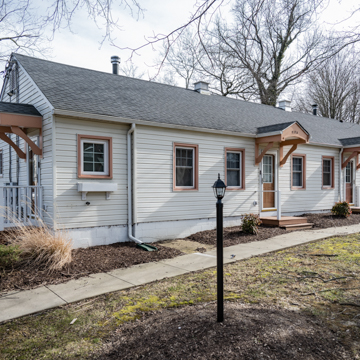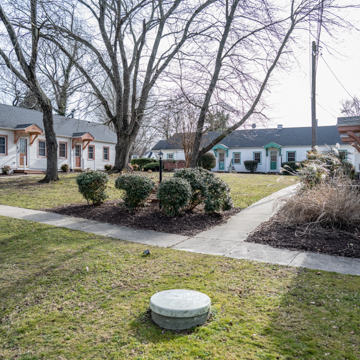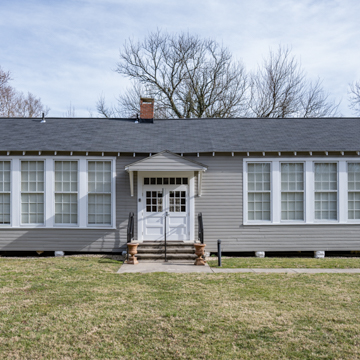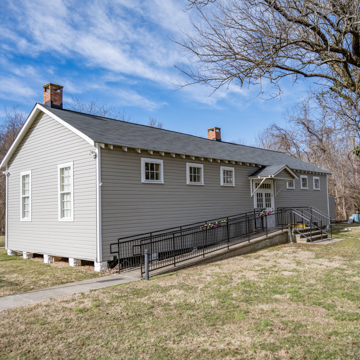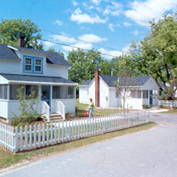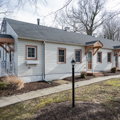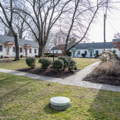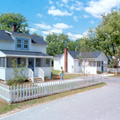Reflective of the free Black communities that developed in pre- and post-emancipation Maryland is the former Tenthouse Creek Village along Benning Road, once home to watermen and oyster shuckers. Emancipated slaves from nearby Tulip Hill were among the first to settle in the waterfront community of Galesville. The district features housing built by the Woodfield Fish and Oyster Company (no longer extant) for their predominately African American employees between 1920 and 1950. In its heyday, the seafood-processing plant employed over a hundred workers. Most conspicuous are nine single-story, duplex units distinguished by their entrance porticos, all arranged in a neat U-shape configuration. Adjacent are dissimilar detached bungalow and vernacular one-and-a-half and two-story single-room-deep frame dwellings.
Also extant is the house built by former slave Henry Wilson (c. 1870; 862 Galesville Road), and the adjacent 1928 Hot Sox Negro League Baseball field, a cornerstone of the community. The team was formed in 1915, at the height of Negro League baseball and Jim Crow segregation. Another community landmark is the Galesville Rosenwald School (c. 1929; c. 1931 addition; c. 2003 restored; 916 Benning). It is a well-preserved example of the simple frame schoolhouses built through the philanthropic efforts of Julius Rosenwald (see Ridgeley School) to provide some parity for African American children in southern states who were denied equal education. It follows the one-teacher plan, with a second classroom added. Galesville is one of ten extant of the original twenty-three Rosenwald schools built in Anne Arundel County, rehabilitated as a community center in 2003.









